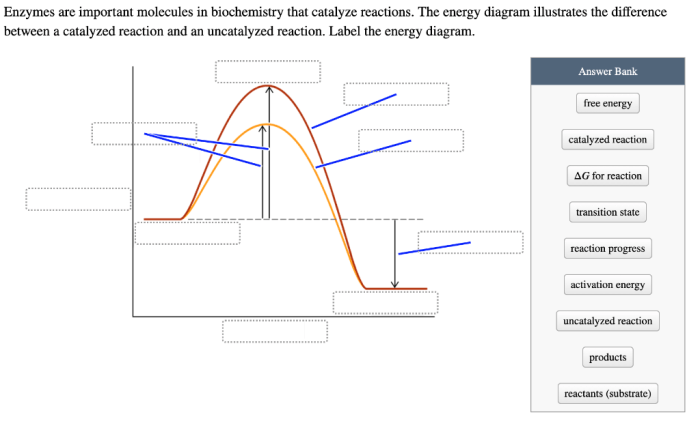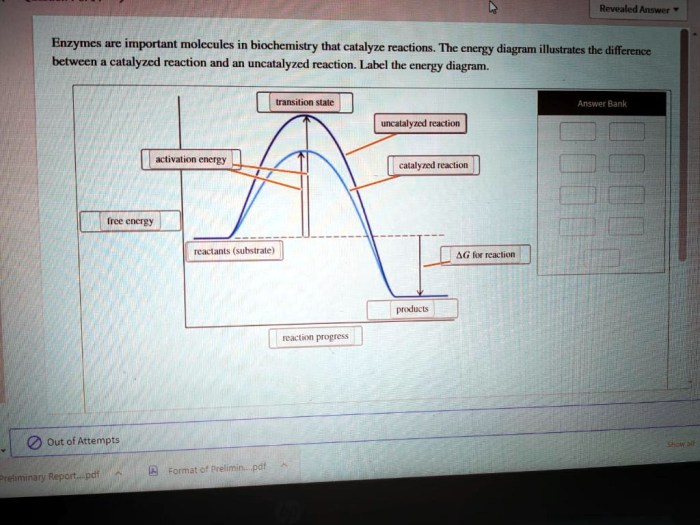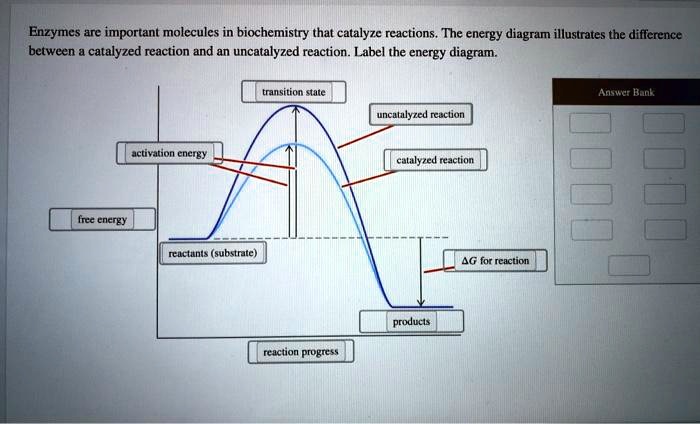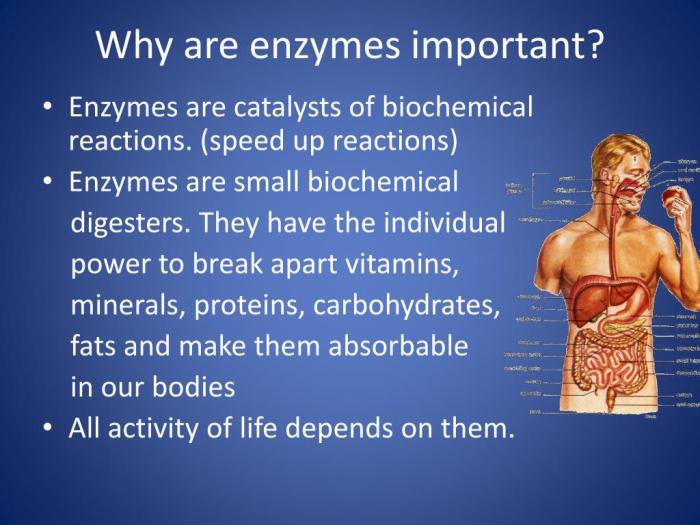Enzymes are important molecules in biochemistry that catalyze reactions, playing a crucial role in countless biological processes. They facilitate chemical reactions by lowering the activation energy required, enabling reactions to occur at faster rates and under milder conditions.
Enzymes exhibit remarkable specificity, catalyzing specific reactions and discriminating between similar substrates. This specificity stems from their unique three-dimensional structures, which create active sites that precisely accommodate and orient substrates for optimal catalysis.
Introduction

Enzymes are proteins that catalyze biochemical reactions. They are essential for life and play a crucial role in a wide range of cellular processes, including metabolism, energy production, and DNA replication.
Catalysis is the process of increasing the rate of a chemical reaction without being consumed in the reaction. Enzymes achieve this by lowering the activation energy of the reaction, which is the energy barrier that must be overcome for the reaction to occur.
This allows the reaction to proceed more quickly and efficiently.
Classification of Enzymes

Enzymes are classified into six main groups based on the type of reaction they catalyze:
- Oxidoreductases: catalyze oxidation-reduction reactions
- Transferases: catalyze the transfer of a functional group from one molecule to another
- Hydrolases: catalyze the hydrolysis of bonds
- Lyases: catalyze the cleavage of bonds by other means than hydrolysis
- Isomerases: catalyze the isomerization of molecules
- Ligases: catalyze the formation of bonds between two molecules
Each class of enzymes contains many different specific enzymes, each with its own unique substrate specificity.
Enzyme Structure and Function

The structure of an enzyme is closely related to its function. Enzymes typically have a globular shape with a deep cleft or pocket called the active site. The active site is where the substrate binds and the reaction takes place.
The active site is lined with amino acid residues that interact with the substrate and facilitate the reaction. These residues can be charged, polar, or hydrophobic, and they create a specific environment that is optimal for the reaction.
Enzyme Kinetics: Enzymes Are Important Molecules In Biochemistry That Catalyze Reactions
Enzyme kinetics is the study of the rates of enzyme-catalyzed reactions. The Michaelis-Menten equation is a mathematical model that describes the relationship between the substrate concentration and the reaction rate.
The Michaelis-Menten equation has two important parameters: the Michaelis constant (Km) and the maximum velocity (Vmax). The Km is the substrate concentration at which the reaction rate is half of Vmax. The Vmax is the maximum rate of the reaction.
Applications of Enzymes in Biotechnology

Enzymes are used in a wide range of industrial applications, including:
- Food processing: enzymes are used to break down proteins, fats, and carbohydrates in food, making them more digestible and flavorful
- Pharmaceuticals: enzymes are used to produce antibiotics, vitamins, and other drugs
- Diagnostics: enzymes are used to detect and measure the concentration of specific molecules in biological samples
Enzyme engineering is a rapidly growing field that is developing new enzymes with improved properties for industrial applications.
FAQ Guide
What is the role of enzymes in biological systems?
Enzymes act as catalysts, accelerating chemical reactions essential for life, such as metabolism, DNA replication, and signal transduction.
How do enzymes achieve their high specificity?
Enzymes possess active sites with unique shapes and chemical properties that selectively bind and orient specific substrates, enabling precise catalysis.
What factors can affect enzyme activity?
Enzyme activity is influenced by factors such as temperature, pH, substrate concentration, and the presence of inhibitors or activators.